Algae Bioplastic is known as a green material with great potential for the world's manufacturing industry. This is a plastic material line exploited from algae instead of petroleum. The production process of Algae Bioplastic and its advantages are always the content of interest to many manufacturers. The following article will open up a more detailed perspective on Algae Bioplastic and its potential!
1. Overview Of Algae Bioplastic
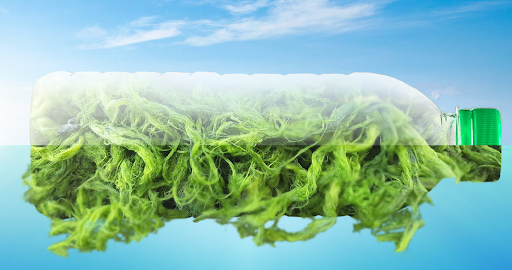
The production process of Algae bioplastics is mainly to extract polysaccharides and lipids from algae to create polymers
Algae bioplastics are a type of biodegradable plastic that is highly appreciated today. Algae bioplastics are made from algae. They are considered a great solution that can be a sustainable alternative to petroleum-based plastics in the future. Specifically, Algae bioplastics are a line of plastics produced based on a renewable resource that absorbs CO2 during the growth process, which is algae. The production process of Algae bioplastics is mainly to extract polysaccharides and lipids from algae to create polymers.
Algae bioplastics provide biodegradable materials that help reduce dependence on fossil fuels. With a series of continuous research on Algae bioplastics, it can be seen that this material will bring prospects as a solution to help reduce environmental impacts. Currently, the application of Algae bioplastics is also covering many areas of life such as household appliances, 3D printing and the packaging industry, etc.
Read more: What are bioplastics made from? Materials to make bioplastics
2. Why Use Algae For Bioplastic?
Algae bioplastic is one of the great material solutions. They bring sustainable benefits for long-term production. Here are some typical reasons why Algae bioplastic is always an optimal choice:
2.1. Sustainability
Algae bioplastic is a material line with strong sustainability. The reason is that algae is a highly renewable resource in the natural environment. They have the ability to grow rapidly in many different environments in rivers, canals, streams, seas and even wastewater environments. Most notably, unlike other plants, algae do not need care, fresh water or arable land. It can be said that they are a huge source of production but do not require too much effort. In addition, algae absorb CO2 during photosynthesis, helping to reduce greenhouse gas emissions, bringing great benefits to the environment. The above characteristics strongly affirm the sustainability of Algae bioplastic in production.
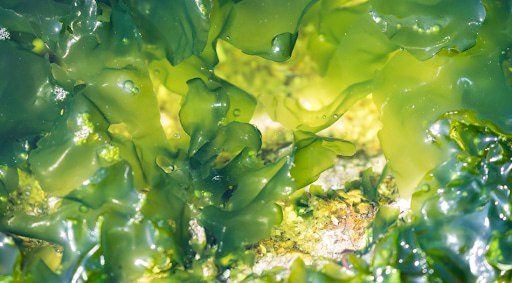
Algae bioplastics could be a major turning point in reducing the environmental impact of plastic production and resource depletion
2.2. Biodegradability
Due to its excellent biodegradability, Algae bioplastic has become the top choice for environmentally friendly production solutions. In particular, the natural decomposition process of Algae bioplastic occurs quickly without leaving harmful residues after this process. This is a significant advantage compared to other material lines, contributing to reducing the risk of pollution when discharged into the environment. Thanks to this ability, Algae bioplastic also contributes greatly to reducing the annual accumulation of plastic waste.
2.3. Reduce dependence on fossil fuels
Algae bioplastic is known as a material produced from algae instead of fossil fuels. This means that when producing Algae bioplastic, it will help preserve non-renewable resources, thereby contributing to environmental degradation. Nowadays, the use of algae as bioplastic reduces the dependence of the manufacturing industry on some natural resources, especially oil. Instead, algae act as a renewable and abundant source of raw materials. In the future, Algae bioplastics could be a major turning point in reducing the environmental impact of plastic production and resource depletion.
3. The Algae Bioplastic Production Process
The Algae bioplastic process involves a few basic steps before bringing the perfect material to the market. Here is a more detailed analysis of each production step:
3.1. Algae cultivation
To meet the current demand for Algae bioplastic production, algae will be cultivated in a carefully controlled environment. Some manufacturers may cultivate algae in open ponds, lakes, or bioreactors to ensure faster and more accurate growth rates. When grown and monitored in this environment, manufacturers can choose different species of algae based on their polysaccharide and lipid content. In which, this source of algae is often grown with salt water or wastewater to help minimize the use of freshwater resources.
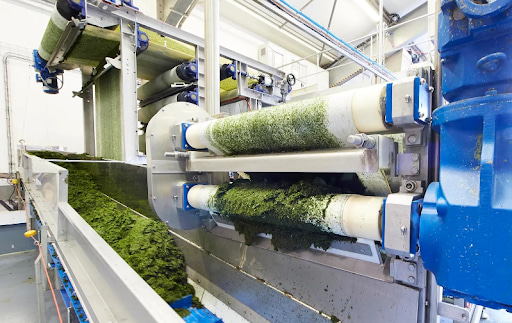
Algae will be cultivated in a carefully controlled environment
3.2. Biomass harvesting
After the algae mature, they are harvested to collect biomass for the Algae bioplastic production process. Here, people harvest by filtering or centrifuging the algae to separate the algae from the water. The algae biomass is then dried again to ensure that all moisture is removed from the mass.
3.3. Polymer extraction
This process involves the extraction of polysaccharides, proteins and lipids from the algae biomass. These components are the main components of algae bioplastics. Algae polymers can be obtained by many methods such as mechanical, chemical or enzymatic to break down the cell walls and isolate them from other substances.
3.4. Polymer processing
At this step of Algae bioplastic production, the polymers are processed again to ensure the best quality of the biopolymers. In addition, they also need to calculate the required material parameters. Some common steps that can be carried out are mixing algae-derived polymers with other additives or biocompatible materials to enhance their properties.
3.5. Forming Bioplastic Pellets
At this step, the resulting Polymer mixture is heated and molded into plastic pellets. The final step in the process of producing bioplastic from algae is to shape the material into the desired product. These bioplastics can be compatible with many manufacturing processes such as extrusion, casting or 3D printing into many different items in life.
4. Advantages of Algae Bioplastics
Algae Bioplastics are considered an advanced and extremely potential material line. They possess countless great benefits that contribute to building an environmentally friendly production method. Here are some outstanding advantages when talking about Algae Bioplastics:
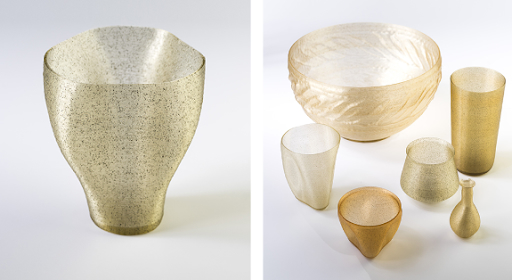
Algae Bioplastics can be compatible with many manufacturing processes into many different items in life
4.1. Renewability
It is known that the main material for producing Algae Bioplastics is algae. Algae is an abundant resource and has the ability to regenerate quickly. They grow strongly without requiring complicated farming conditions. In addition, algae do not need to consume large amounts of fresh water because they can grow in saltwater or even wastewater. Therefore, Algae Bioplastics are considered a sustainable option to help reduce pressure on natural resources.
4.2. CO2 absorption capacity
The development process of Algae Bioplastics helps consume a lot of CO2 from the environment. The reason is that the natural photosynthesis process of algae needs to absorb CO2, which helps neutralize carbon or even negative carbon. It can be assessed that the development of Algae Bioplastics is also a great solution to reduce the greenhouse effect, combating current climate change.
4.3. Biodegradability
Due to its ability to decompose naturally in the environment, Algae Bioplastics are gradually gaining the favor of consumers. The decomposition process of Algae Bioplastics takes place quickly in the natural environment without the need for any industrial methods. Their biodegradability rate is complete. They are a solution to reduce the burden of waste on the environment.
4.4. Non-toxic
Algae Bioplastics are considered safe for human health throughout the use process. Besides, their decomposition process does not release any chemicals or toxins into the environment. Therefore, it can be affirmed that Algae Bioplastics are both safe for humans and safe for the ecosystem.
4.5. Reduced dependence on fossil fuels
A special factor in environmental protection that Algae Bioplastics bring is that they do not depend on fossil fuels. Their production is based on algae exploitation and does not require oil exploitation or other non-renewable resources. It can be said that they have great potential to become a sustainable material solution for the future.
5. The Future of Algae Bioplastics
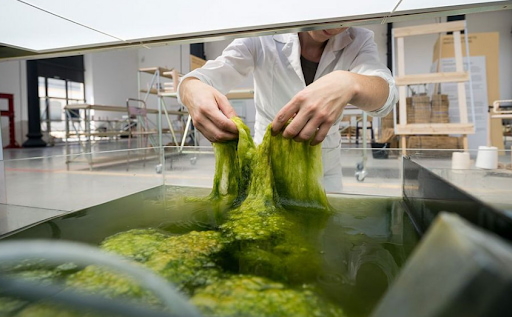
Algae Bioplastics contribute to promoting the transition to sustainable materials on a global scale in the future
The future of Algae Bioplastics is promising as the world seeks solutions for the environment and resources. They will be a source of extremely potential materials in most areas of human life.
Currently, the production cost of Algae Bioplastics is higher than many other materials. However, with the expansion of the cultivation scale and the technique of extracting polymers from this abundant material source, it can help balance or even save costs.
As environmental protection factors are increasingly appreciated, Algae Bioplastics contribute to promoting the transition to sustainable materials on a global scale in the future. They have a great competitiveness with other materials thanks to their rapid biodegradability.
6. Conclusion
In conclusion, Algae Bioplastics is an ideal choice for green manufacturing solutions. With excellent properties such as being derived from algae, biodegradable, renewable, and non-toxic, etc. Algae Bioplastics strongly affirms its position as an advanced material. In the future, Algae Bioplastics has the potential to become an alternative to many other material lines thanks to its environmental friendliness and independence from natural resources.
7. About EuroPlas’ Bioplastics
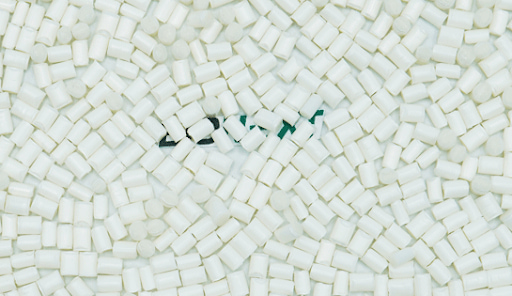
Europlas biological production process is always strictly controlled to meet all requirements
Europlas is proud to be a leading supplier of plastic materials in the world. We are also on the continuous research journey of developing high quality Bioplastics.
Developed exclusively by EuroPlas, BiONext t is a biodegradable biological compound with outstanding mechanical properties. The product is manufactured from renewable materials such as polylactic acid (PLA) and polyhydroxyalkanoate (phase), plants (corn, palm oil, potatoes). In addition, biodegradable bio -biological beads also possess superior mechanical properties such as high hardness, excellent impact durability, good extension with glossy, beautiful surface and easy processing ability. Some typical Bionext products are:
Complete products made from biont biological compounds can easily decompose within 12 months. BiONext biomass after decomposition can continue to be used as agricultural fertilizer, thus creating a circulatory life cycle for the product. This is the premise for sustainable development for the foundation of the ecosystem and environmentally friendly.
Europlas ensures that our biological production process is always strictly controlled to meet all requirements. Let's contact Europlas today for a green project in the future!